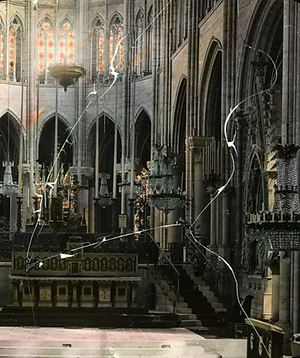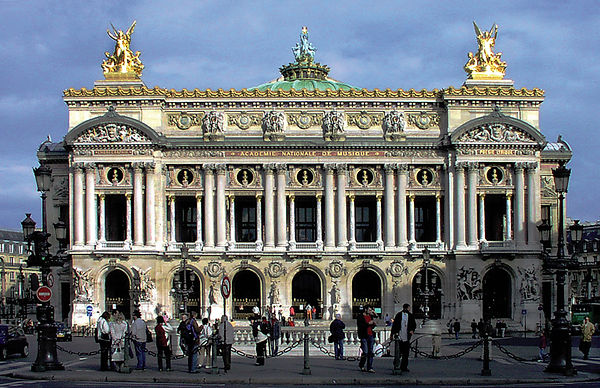Paris in the belle epoque

WHY ARE THESE PLACES IMPORTANT?
1. THE OPERA HOUSE: The style is monumental and considered typically Beaux-Arts. The opera building has 1,979 seating capacity which makes it one of the largest theaters in the world.
2. THE EIFFEL TOWER: It commemorates the centennial of the French Revolution and demonstrates France's industrial prowess to the world.
3. THE SACRE COEUR: It's a national penance for the defeat of France in the 1871 Franco-Prussian War and the socialist Paris Commune of 1871 and an embodiment of conservative moral order, publicly dedicated to the Sacred Heart of Jesus
4. NOTRE DAME: It has survived two world wars, the French Revolution, Nazi occupation and Hitler's intention to raze it to the ground.
5. THE PANTHEON: It was secularized during the French Revolution and dedicated to the memory of great Frenchmen, receiving the name Panthéon.
6. ARC DE TRIOMPHE: It honours those who fought and died for France in the French Revolutionary and Napoleonic Wars
7. LES INVALIDES: Les Invalides is famous as the final resting place of Napoleon. Yet, Les Invalides is actually a group of buildings dedicated to France's military history.
8. MUSÉE DE CLUNY: beneath it is the ruins of Gallo-Roman thermal baths believed to have been used by 3rd-century boatmen.
9. PLACE RÉPUBLIQUE: The newly designed square encourages diversity and invites users to engage in multiple activities.
10. CEMETERY PÈRE LACHAISE: it is both the largest park and the largest cemetery in Paris. It's renowned for its tombs of notable figures, and it is often hailed as the most-visited cemetery in the world.
Postcards from Paris


-
Torre Eiffel
-
Torre Eiffel and Champ de Mars
-
Les Invalides
-
The sacre Cœur
-
Palais de Chaillot
-
Pont Alexandre III
-
The Opéra house
-
Confiturerie de Saint-James
-
Boulevard des Italiens
-
Tombe d'Héloïse
-
The porte of Saint Martin
-
Arc the triomphe
-
Notre dame
-
Av. des Champs-Élysées
-
Pont du Carrousel
-
Luxembourg Palace
-
Notre Dame
-
Pont Neuf and La Conciergerie
-
Jardin des Tuileries
-
L'église de la Madeleine
-
Torre Eiffel
-
Place de la concorde
-
Bois de Vincennes
-
Marc Anthony lion chariot


Here is the video!
The Opera House
-
COMPREHENSION CHECK
1 Who ordered the construction of the Opera?
The construction of the Opera was ordered by Napoleon III.
2 What are its various architectual styles?
The opera house included elements from the Baroque, the classicism of Palladio, and Renaissance architecture blended together.
3 What was the purpose of the large ramp on the West side of the opera?
Was designed to allow secure and direct access by the Emperor via a double ramp to the building.
4 Why was then completion of the Opera delayed?
The completion of the Opera delayed because the Franco-Prussian War, and a fire in 1873.
5 Who designed the Opera?
Charles Garnier designed the Opera.
6 What was the purpose of the underground lake?
Garnier designed a double foundation to protect the superstructure from moisture. It incorporated a watercourse and an enormous concrete cistern which would both relieve the pressure of the external groundwater on the basement walls and serve as a reservoir in case of fire.
7 What are the four allegorical groups on the facade?
- L'Harmonie or Poétrie (Harmony or Poetry) by François Jouffroy.
- La Musique Instrumentale (Instrumental Music) by Jean-Baptiste Claude Eugène Guillaume.
- Le Drame Lyrique (Lyrical Drama) by Jean-Joseph Perraud.
- La Danse by Jean-Baptiste Carpeaux.
